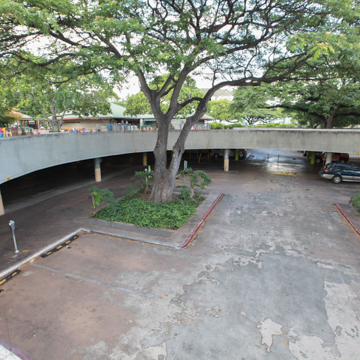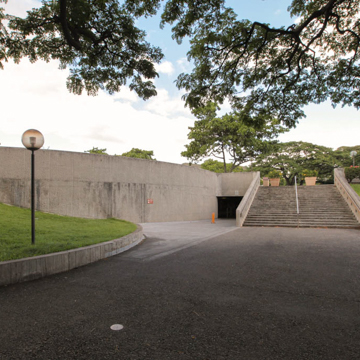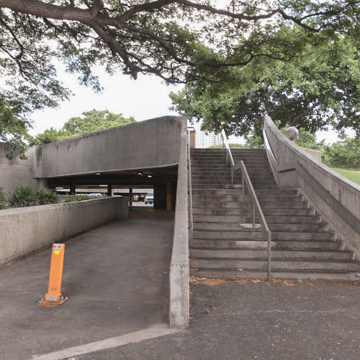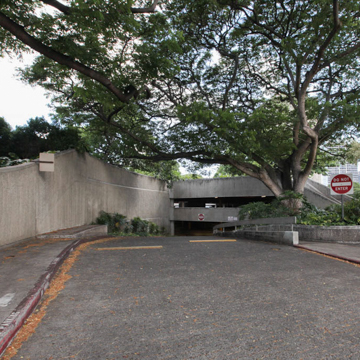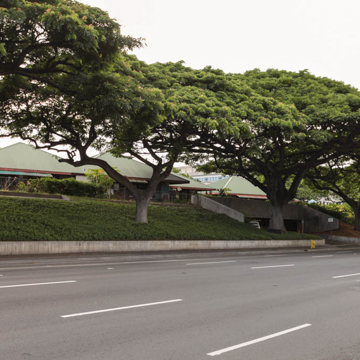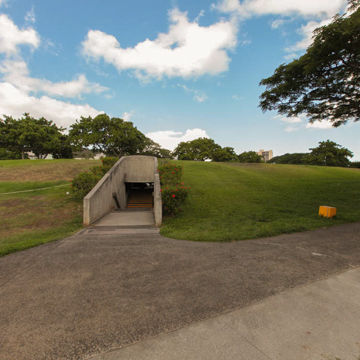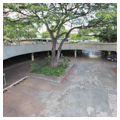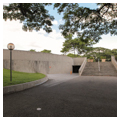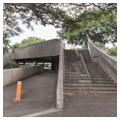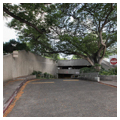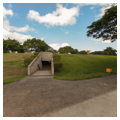A mound of grass molded by strategically placed corrugated-concrete walls, this artificial hillock gently rolls down to its surrounding sidewalks. Started in November 1977, it stands as Hawaii's most aesthetically pleasing parking structure. The parklike plan covers approximately five acres while accommodating 939 cars on two levels. Three circular light wells with monkeypod trees provide ventilation and spatial variety, as well as a relationship with the outdoors rarely found in parking garages. The light wells also define the meandering pathway traversing the top of the structure. The sculptured tubers (1998) on the crest of the Alapai Street slope are by Jodi Endicott.
Takashi Anbe was born in 1925 in Wailuku, and received a degree in architectural engineering from Washington State University. Following World War II, he joined Wimberly and Cook, and in 1956 opened his own office. In 1961, Mits Aruga, a graduate of Hilo High School and the University of Illinois' school of architecture, joined Anbe's office. Hachiro Ishizu, a graduate of Laupahoehoe High School, who graduated from Cornell University's department of architecture, joined the firm in 1969 after working several years on the mainland. Aruga, Ishizu and Tsutsui became partners in the firm in 1971. Albert H. Tsutsui operated the firm's Guam office, and, when it closed, he remained on that island to start his own business. Other buildings by the firm follow a clean-lined modern sensibility, as displayed by the Astronomy (1975) and Plant Science (1970) buildings at the University of Hawaii and Maui Prince Resort (MA22).















